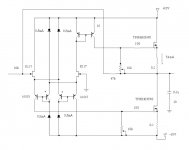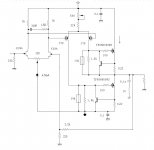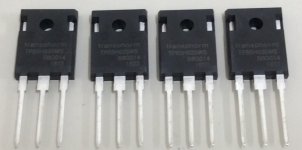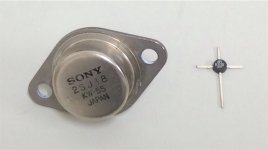Hi Guys,
Is this new Toshiba MOSFET looks like triode curves ?.
https://www.mouser.in/datasheet/2/408/TK040N65Z_datasheet_en_20180718-1386973.pdf
Is this new Toshiba MOSFET looks like triode curves ?.
https://www.mouser.in/datasheet/2/408/TK040N65Z_datasheet_en_20180718-1386973.pdf
SCT3030ALGC11 ROHM Semiconductor | Mouser
https://www.mouser.com/datasheet/2/348/sct3030al-e-1003135.pdf
Candidate to schade feedback ?
https://www.mouser.com/datasheet/2/348/sct3030al-e-1003135.pdf
Candidate to schade feedback ?
Not really. You want to have a Id decreasing with Vds decreasing for a fix Vgs. And each of these should be different for a different Vgs. So it should look like Vgs controlling a variable resistor.Hi Guys,
Is this new Toshiba MOSFET looks like triode curves ?.
https://www.mouser.in/datasheet/2/408/TK040N65Z_datasheet_en_20180718-1386973.pdf
FIRST WATT
Oon
Producer of GaN SIT´s tomorrow ?
Transphorm GaN Power FET Portfolio - Transphorm
https://www.transphormusa.com/en/document/datasheet-tp65h050ws-650v-gan-fet/
Transphorm GaN Power FET Portfolio - Transphorm
https://www.transphormusa.com/en/document/datasheet-tp65h050ws-650v-gan-fet/
Attachments
Yes, a lot of them do. Electrothermal instability seems to be pretty similar
to second breakdown - it is the result of a positive temperature coefficient
(current goes up with temperature) and large die surfaces which don't
have adequate matching across the surface. Also includes the possibility
of voids between the die and the metal surface beneath it and edge effects.
At high currents, the temperature coefficient goes negative, so it's not
a particular problem at very low voltage/high current.
Ixsys has a white paper on it buried somewhere on their site, and I recall
On Semi had an earlier paper on the subject.
The issues with the internally cascoded structure parts may be something
else, and I haven't seen anything on that.
At this point I am simply very cautious when I don't see the DC curve for
safe operating area.
to second breakdown - it is the result of a positive temperature coefficient
(current goes up with temperature) and large die surfaces which don't
have adequate matching across the surface. Also includes the possibility
of voids between the die and the metal surface beneath it and edge effects.
At high currents, the temperature coefficient goes negative, so it's not
a particular problem at very low voltage/high current.
Ixsys has a white paper on it buried somewhere on their site, and I recall
On Semi had an earlier paper on the subject.
The issues with the internally cascoded structure parts may be something
else, and I haven't seen anything on that.
At this point I am simply very cautious when I don't see the DC curve for
safe operating area.
- Status
- This old topic is closed. If you want to reopen this topic, contact a moderator using the "Report Post" button.
- Home
- Amplifiers
- Pass Labs
- Triode Transistor



